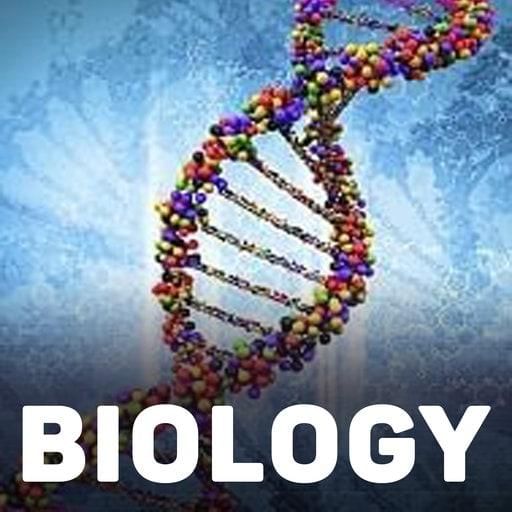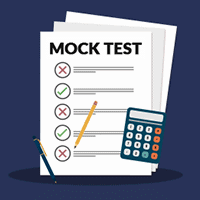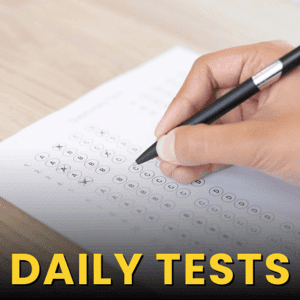Test and Measurement in Sports Chapter Notes | Physical Education Class 12(XII) - Notes & Model Test Papers - Humanities/Arts PDF Download
| Table of contents |

|
| Fitness Test - SAI Khelo India Fitness Test in School |

|
| Measurement of Cardio-Vascular Fitness |

|
| Rikli and Jones Senior Citizen Fitness Test |

|
| Johnson – Metheny Test of Motor Education |

|
Fitness Test - SAI Khelo India Fitness Test in School
Fitness refers to the capacity to engage in physical activities and encompasses a wide array of abilities. Different activities and sports demand specific skill sets, so being fit for one activity or sport doesn't automatically make you fit for another. Fitness is typically categorized into specific components, each of which can be tested and trained separately. The following sections will guide you in administering the Fitness Test more effectively in your school using the Khelo India Fitness Assessment App and monitoring the School Dashboard on the School Interface.
Battery of Tests
Age Group 5-8 Years | Class 1 to 3:
Fundamental Movement Skills (FMS)
- At the primary level (Class 1-3), children should focus on acquiring Fundamental Movement Skills (FMS) rather than learning specific physical activities. FMS are the building blocks for various physical activities, including games, dance, and sports.
Key Abilities to Measure:
- Body Composition (BMI)
- Coordination (Plate Tapping)
- Balance (Flamingo Balance)
Age Group: 9-18+ Years | Class 4 to 12:
- Overall Physical Fitness: For students in Class 4 to 12, it is crucial to focus on overall physical fitness. The following components should be considered in the Physical Health and Fitness Profile:
- Strength:
- Abdominal Strength (Partial Curl-up)
- Muscular Endurance (Push-Ups for Boys, Modified Push-Ups for Girls)
- Flexibility: Sit and Reach Test
- Cardiovascular Endurance: 600 Meter Run/Walk
- Speed: 50 Meter Dash
Body Mass Index (BMI)
Purpose
Body Composition primarily refers to the distribution of muscle and fat in the body. Body size measurements such as height, lengths, and girths are also included under this component.
Infrastructure/Equipment Required:
- Flat and Clean Surface
- Weighing Machine
- Stadiometer or Measuring Tape (pasted on a wall)
Procedure
Measuring Height Accurately:
- Remove any items that could interfere with the measurement, such as shoes, bulky clothing, hair ornaments, and braids.
- Take the measurement on a flat, non-carpeted surface against a wall without moulding.
- Have the participant stand with their feet flat, together, and back against the wall, ensuring their legs are straight, arms are at their sides, and shoulders are level.
- Ensure the participant is looking straight ahead with their line of sight parallel to the floor.
- Use a flat headpiece to mark the height by forming a right angle with the wall and lowering it to touch the crown of the head.
- Measure the height from the floor to the marked point on the wall, recording it to the nearest 0.1 centimeter.
Measuring Weight Accurately:
- Use a digital scale placed on firm flooring, avoiding spring-loaded bathroom scales and carpeted surfaces.
- Have the participant remove shoes and heavy clothing, standing with both feet in the center of the scale.
- Record the weight to the nearest decimal fraction.
Scoring:
- Calculate the Body Mass Index (BMI) using the formula: BMI = W / (H x H), where W is body weight in kilograms and H is height in meters.

- Higher BMI scores typically indicate higher levels of body fat.
- Record height in centimeters and millimeters, and weight in kilograms and grams, ensuring accuracy to the nearest decimal fraction.

Plate Tapping Test
Purpose
- Assesses speed and coordination of limb movement.
Equipment Required:
- Adjustable-height table, two yellow discs (20 cm in diameter), a rectangular board (30 x 20 cm), and a stopwatch.

Procedure
- Adjust the table height so that the participant stands comfortably in front of the discs.
- Position the two yellow discs 60 cm apart on the table, with the rectangular board placed centrally between them.
- The participant places their non-preferred hand on the rectangle while using the preferred hand to tap alternately between the two discs as quickly as possible, crossing over the stationary hand.
- The movement is repeated for 25 full cycles (50 taps).
Scoring: The total time taken to complete 25 cycles is recorded.
Flamingo Balance Test
Purpose
Evaluates single-leg balance, testing the strength of leg, pelvic, and trunk muscles along with static balance.
Equipment Required:
Non-slippery, even surface, stopwatch, and a balancing beam.
Procedure
- Stand on the beam, using the instructor’s hand for initial support if needed.
- Balance on the preferred leg while bending the free leg at the knee and holding its foot close to the buttocks.
- The stopwatch starts when the instructor releases the participant’s hand.
- Time is paused each time the participant loses balance (falls off the beam or lets go of the foot). Timing resumes until balance is lost again.
- If the participant falls more than 15 times within the first 30 seconds, the test is discontinued.
Scoring: The total number of falls within 60 seconds is recorded. If balance is lost more than 15 times in the first 30 seconds, the test is terminated.
Age Group: 9-18+ Years | Class 4 To 12
To assess students’ overall fitness, the following components are considered:
Body Composition: Measured using BMI (Body Mass Index).
Strength:
- Abdominal Strength: Evaluated through Partial Curl-ups.
Muscular Endurance:
- Boys: Push-ups
- Girls: Modified Push-ups
Flexibility: Tested using the Sit and Reach Test.
Cardiovascular Endurance: Measured with the 600-meter Run/Walk.
Speed: Assessed through the 50-meter Dash.
Curl-Ups
Purpose: To assess abdominal strength and endurance.
Equipment: Flat, clean surface.
Procedure:
- Lie on your back with knees bent and feet flat on the ground.
- Arms are crossed over the chest or placed behind the head.
- Curl up by lifting the shoulder blades off the ground, engaging the core.
- Lower back down to the starting position.
- Repeat as many times as possible within the time limit.
Scoring: Count the number of curl-ups completed in the specified time.
Push-Ups (Boys)/Modified Push-Ups (Girls)
Purpose
- To measure upper body strength endurance and trunk stability.
Equipment:
- Flat, clean, cushioned surface or gym mat.
Procedure
- For boys: Start in a push-up position with hands and toes on the floor, body in a straight line.
- Lower the body until the elbows form a 90-degree angle, then push back up to the starting position.
- For girls: Same procedure, but with knees resting on the ground.
- Continue until exhaustion or a target number is reached.
Scoring: Count the number of correctly completed push-ups.
Sit and Reach
Purpose
- To assess flexibility, specifically of the lower back and hamstring muscles.
Equipment:
- Sit and Reach box with specific dimensions, flat, clean, cushioned surface or gym mats.
Procedure
- Sit on the floor with legs stretched out straight, shoes off.
- Place soles of feet against the Sit and Reach box, knees locked and pressed flat to the floor.
- Reach forward along the measuring line with palms facing down, hands on top of each other.
- Hold the position for 1-2 seconds to record the distance reached.
Scoring: Record the distance reached by the hands in cm and mm.
600 M Run/Walk
Purpose
- To evaluate cardiovascular fitness and endurance.
Equipment:
- Stopwatch, whistle, marker cones, lime powder, measuring tape, flat and even playground with marked starting and finish lines.
Procedure
- Participants are instructed to run 600 meters at the fastest possible pace.
- Start on the signal “ready, start.”
- Announce the elapsed time as participants cross the finish line.
- Walking is permitted, but the goal is to cover the distance in the shortest time.
Scoring: Record the time taken for completion in minutes and seconds.
50 M Dash (Standing Start)
Purpose
- To assess acceleration and speed.
Equipment:
- Measuring tape or marked track, stopwatch, cone markers, flat and clear surface of at least 60 meters.
Procedure
- Conduct a thorough warm-up, including practice starts and accelerations.
- Start from a stationary position with one foot in front of the other, front foot on or behind the starting line.
- Provide hints for maximizing speed and encourage running hard through the finish line.
Measurement of Cardio-Vascular Fitness
Harvard Step Test
- Development: The Harvard step test was created by Brouha in 1943 to assess physical fitness for work and the capacity to recover from it. Initially, it was designed for young men of college age, and Brouha tested 2,200 males during the original validation.
- Purpose: The primary aim of the test is to determine aerobic fitness.
- Objective: Participants are expected to perform the step test continuously without breaks for 5 minutes or until they reach exhaustion.
- Equipment Needed:. bench or wooden block 20 inches high, a stopwatch, and a metronome.
Test Procedure:
- The test begins on the command "Go." Participants step up and down on the wooden block or bench at a rate of 30 steps per minute for 5 minutes.
- Participants are instructed to follow the metronome's commands:
- On the first "up" or the first metronome sound, place one foot on the bench.
- On the second "up" or the second metronome sound, place both feet on the bench, standing straight with legs and back erect.
- After exactly 5 minutes, on the signal "stop," participants immediately sit down on the bench. If a participant cannot maintain the pace, they are considered exhausted, and the test ends before the full 5 minutes.
Scoring: The tester notes the duration of exercise in seconds and applies a specific formula to assess the results.
Pulse Count
- After the test is finished, the student sits down, and the tester measures the heartbeats within 1 to 1½ minutes.
Scoring: The Fitness Index score is calculated using the following formula:
Duration of Exercise in Seconds x 100 5.5 x Pulse count 1 − 1.5 min after Exercise = Fitness Index score
Norms for Harvard Step Test
- Upto 49: Poor
- 50-80: Average
- 81 or Above: Good
 |
Test: Test and Measurement in Sports- 1
|
Start Test |
Computing Basal Metabolic Rate (BMR)
BMR is the number of calories required to keep the body functioning at rest. In other words, BMR represents the calories burned by the body while performing essential life-sustaining functions. Even when a person is not engaged in any physical activity, their body needs energy for the functioning of internal organs, and this energy is called the Basal Metabolic Rate. BMR is measured in kilocalories (Kcal).
Several factors can influence BMR, including:
- Muscle Mass
- Age
- State of Mind
- Gender
- Genetics
- Body Composition
Additionally, environmental changes, such as variations in temperature, can also affect the body's energy requirements.
Purpose: To determine Basal Metabolic Rate
Equipment: Stadiometer, Weight machine, Pen and paper
Procedure: The method for measuring height and weight is described in the Body Mass Index (BMI) section.
Formula Used: The Mifflin-St Jeor BMR Equation
- Male Calculation: (10 × weight in kg) + (6.25 × height in cm) – (5 × age in years) + 5
- Female Calculation: (10 × weight in kg) + (6.25 × height in cm) – (5 × age in years) – 161
Extension Activity
Every student will prepare their own profile of fitness testing as per below format.

Rikli and Jones Senior Citizen Fitness Test
The Senior Citizen Fitness Test (SFT) was created by Rikli and Jones for older adults aged 60 to 94. The test aims to assess functional ability, monitor physical fitness, and identify areas needing improvement. It's important to note that individuals with medical conditions such as chest pain, dizziness, high blood pressure, or heart problems should not attempt this test. The SFT is cost-effective and easy to administer, comprising the following components:
- Chair Stand Test: Measures lower body strength.
- Arm Curl Test: Assesses upper body strength.
- Chair Sit and Reach Test: Evaluates lower body flexibility.
- Back Scratch Test: Tests upper body flexibility.
- Eight Foot Up and Go Test: Assesses agility.
- Six Minute Walk Test: Measures aerobic endurance.
30 Second Chair Stand Test
Purpose: To assess lower body strength.
Objective: To complete the maximum number of stands in 30 seconds.
Equipment:. straight back chair without arms and a stopwatch.
Procedure:
- Position the chair against a wall for stability.
- The individual sits on the chair with a straight back, arms crossed, and feet flat on the floor, shoulder-width apart.
- On the command “Go,” the individual stands up completely and then sits back down. This counts as one stand.
- Encourage the individual to complete as many stands as possible in 30 seconds.

Scoring: Count the maximum number of complete stands. If the individual is halfway up when time is called, it counts as a full stand.
Arm Curl Test
Purpose: To assess upper body strength.
Objective: To complete the maximum number of arm curls in 30 seconds.
Equipment:. straight back chair without arms, a dumbbell (8 pounds for men, 5 pounds for women), and a stopwatch.
Procedure:
- The individual sits on the chair with a straight back, feet on the floor, holding the dumbbell with the dominant hand using a handshake grip.
- On the command “Go,” the individual curls the arm, flexing the elbow fully, and then returns to the starting position.
- The dumbbell should return to the handshake grip in the down position.
- The individual aims to perform as many arm curls as possible in 30 seconds.
Scoring: Count the maximum number of correct arm curls in 30 seconds.
Chair Sit and Reach Test
Purpose: To assess lower body flexibility. Objective: To stretch the lower body as far as possible.
Objective: To stretch the lower body as far as possible.
Equipment:. straight back chair without arms and an 18-inch ruler.
Procedure:
- Place the chair against a wall for stability.
- The participant sits on the chair with one foot flat on the floor and the other leg extended forward, knee straight, heel on the floor, and ankle bent at 90 degrees.
- The participant attempts to touch the toe of the extended leg by bending at the hip and sliding their hands towards the toes.
- To record a score, the participant must hold this position for 2 seconds.
Scoring: Measure the distance between the extended long finger and the tip of the toe. Record the minimum to 0.5 inches as the score. If fingers cross the toe, indicate with a + sign; if unable to touch the toe, indicate with a - sign.
Back Scratch Test
Purpose: To assess upper body flexibility.
Objective: To touch or overlap the fingers of both hands behind the back.
Equipment: An 18-inch ruler. Procedure:
Procedure:
- In a standing position, the participant places one hand over the shoulder and the other hand in the middle of the back, attempting to touch or overlap the fingers.
Scoring: Measure the distance between the tips of the middle fingers. If the fingertips touch, the score is zero. If they do not touch, measure the distance between the fingertips (a negative score); if they overlap, measure by how much (a positive score).
Eight Foot Up and Go Test
Purpose: To assess physical mobility, including power, speed, agility, and balance.
Objective: To stand, walk 16 feet, and sit back down as quickly as possible (without running).
Equipment:. straight back chair without arms, a cone, and a stopwatch.
Procedure:
- Place the chair against a wall for stability.
- The participant sits on the chair with both feet on the floor.
- On the command “Go,” the participant walks as fast as possible (without running) to and around the cone placed 8 feet away from the chair and then returns to the chair.
Scoring: Two attempts will be made, and the best score will be recorded. The fastest time from the command “Go” to returning to the chair will be noted.
 |
Download the notes
Chapter Notes: Test and Measurement in Sports
|
Download as PDF |
Minute Walk Test
- Objective: To cover the maximum distance in 6 minutes.
- Equipment: Walking area of 20 yards with parallel lines connected by 5-yard lines, creating rectangles; stopwatch; cone.
- Procedure: Participants will start walking on the track after the command "Go" and continue for 6 minutes. The goal is to cover the maximum distance without running.
- Scoring: The distance covered in 6 minutes will be recorded as the score.
Minute Step Test
- Purpose: To assess aerobic endurance by counting the maximum number of steps in 2 minutes. This test is suitable for individuals using orthopedic devices or those with balance difficulties.

- Equipment: Tape for marking the wall, stopwatch, wall.
- Procedure: The participant stands next to the wall with a mark at the midpoint between the patella and the iliac crest. They march in place for two minutes, lifting their knees to the mark on the wall. Resting and holding onto the wall or a stable chair is permitted.
- Scoring: The total number of times the right knee reaches the tape level in two minutes is recorded.
Johnson – Metheny Test of Motor Education
Objective: The Johnson- Metheny Test battery is a revised version of the Johnson Educability Test, which was originally designed in 1932. The goal of the Johnson battery was to assess neuromuscular skill capacity through ten different items. In 1938, Metheny studied this test and removed six items, resulting in the current test battery that consists of four motor stunts.
Test Battery: The test includes four motor stunts for boys and three for girls. The stunts are:
- Front Roll
- Back Roll
- Jumping Half-Turns
- Jumping Full Turns
Test Area: The test area consists of a mat measuring 15 feet in length and 2 feet in width. The length is divided into ten sections of 18 inches each. The width of the transverse lines varies between ¾ inch and 3 inches. A lengthwise line, ¾ inch wide, is marked in the middle of the mat area.
Front Roll: The subject starts outside the marked area and performs two front rolls: one up to 7.5 feet in one half and the second in the other half. The rolls must be performed without touching the limits or overreaching the specified zones.
Scoring for Front Roll:
- 5 points for each correct roll (maximum of 10 points).
- 2 points deducted for overreaching the side line (right or left) for each roll.
- 1 point deducted for overreaching the end limit on each roll.
- 5 points deducted for failing to perform a true front roll.
Back Roll: The procedure and scoring are similar to the front roll. The subject starts outside the marked area and performs two back rolls within the 2 feet lane area, one in each half.
Jumping Half Turns: The subject starts with feet on the first 3-inch line, jumps to the second 3-inch line while executing a half turn (either right or left), jumps to the third 3-inch line executing a half turn in the opposite direction, and continues this pattern to the fourth and fifth 3-inch lines.
Scoring for Jumping Half Turns:
- Perfect execution of four jumps is worth 10 points.
- 2 points deducted for each wrong jump (e.g., not landing with both feet on the 3-inch line, turning the wrong way, or both).
Jumping Full Turns: The subject starts with feet outside the marked area and jumps to the second rectangular space, executing a full turn (right or left), and continues jumping to alternate rectangular spaces while executing full turns in the same direction, landing on both feet each time.
Scoring for Jumping Full Turns:
- Perfect execution of five jumps is worth 10 points.
- 2 points deducted for failing to maintain balance on landing, turning too far, or overstepping the squares.
|
12 videos|72 docs|31 tests
|
FAQs on Test and Measurement in Sports Chapter Notes - Physical Education Class 12(XII) - Notes & Model Test Papers - Humanities/Arts
| 1. What is the SAI Khelo India Fitness Test and what does it measure? |  |
| 2. How can I measure my cardiovascular fitness effectively? |  |
| 3. What is Basal Metabolic Rate (BMR) and how is it calculated? |  |
| 4. What is the Rikli and Jones Senior Citizen Fitness Test and who is it for? |  |
| 5. What is the Johnson – Metheny Test of Motor Education, and what does it assess? |  |




























